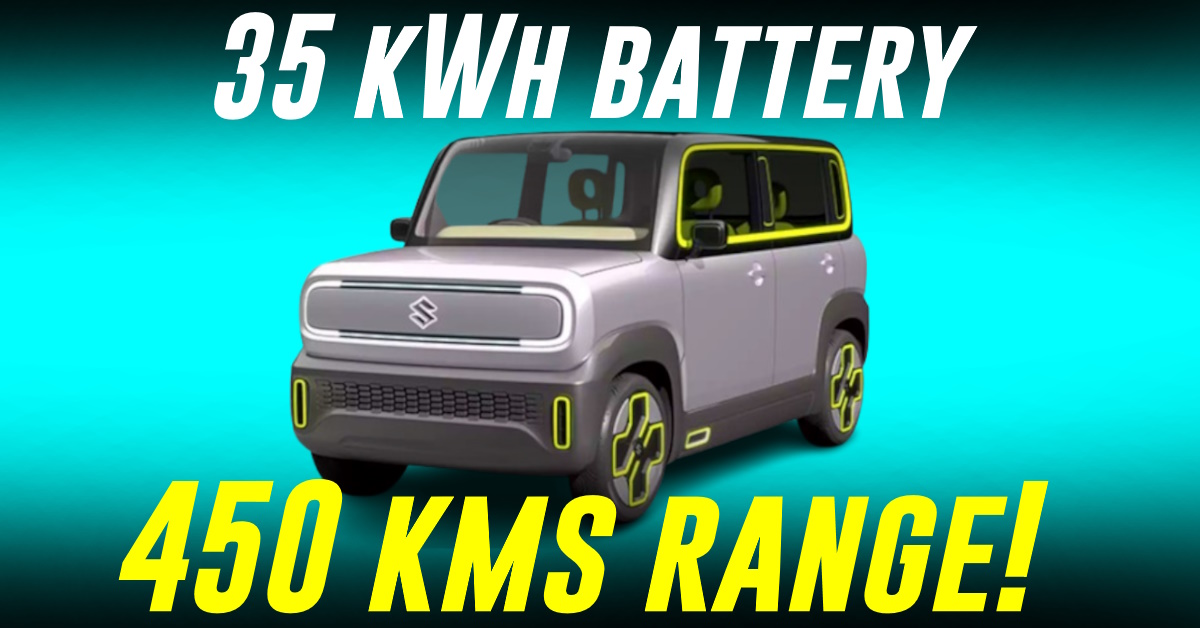Maruti’s Low Cost Electric Hatchback To Offer Double The Range Of Tata Tiago.EV And MG Comet


Maruti Suzuki will kick start its EV spree in India with eVitara in March. Latest reports suggest that the carmaker could be working on an entry level electric hatchback, currently codenamed Y2V, slated for a market entry in 2028. Maruti Suzuki India Limited (MSIL) plans to launch 6 EVs by 2031, and the Y2V hatchback is an important member of them. It will likely have double the range of Tiago.EV and the Comet. Let’s dive into the details.

If reports are to be believed, the Y2V hatchback will be designed and developed locally- the first one to do so- specifically for the Indian market. It will try to slot in on the affordable side of things. The manufacturer expects its five-year production volume to be around 2.5 lakh units. The hatchback will be the production form of the Maruti Suzuki eWX concept that was showcased earlier.

Sources say that the production-spec Y2V will come with a 35 kWh battery pack. This, if you see, is a lot smaller than the eVitara’s 61kWh unit. No official word on the estimated range figures is out yet. However, it wouldn’t be pointless to draw some assumptions. The Y2V hatchback will have the Tiago.EV and MG Comet as its key rivals.
Both rivals come with smaller battery packs. The MG Comet gets a 17.3 kWh Lithium ion battery while the Tiago EV offers the choice of a 19.2 kWh and 24 kWh units. Despite having the smallest battery among the three, the Comet claims a range of 230 km per charge.
The Tiago EV claims 250 and 315 km per charge, on the smaller and larger battery packs respectively. Now, if we were to take just the lower battery specs- 17.3 kWh and 19.2 kWh- the Maruti Y2V hatchback has almost double the capacity. It could thus offer almost double the range as well, at about 450 kilometers (ARAI certified). Yes, these are early assumptions!
Having said that, this EV hatchback from Maruti Suzuki is targeted at urban dwellers with short-haul/ commute needs. Opting for the smaller battery pack has allowed the company to balance affordability with functionality

Maruti Suzuki sources the eVitara’s battery packs- 49 kWh and 61 kWh- from BYD. BYD’s Blade cell technology is known to be among the best in the world. Maruti Suzuki’s strategy is to import battery packs, instead of importing cells and assembling them locally. This would help in maintaining quality in keeping long-term costs and manufacturing complexities under check.
The increased degree of localisation in the design and development of this electric hatchback will also play a key role in minimizing costs. BYD cells use LFP chemistry and have a pronounced upper hand over NMC (Nickel Manganese Cobalt) alternatives. They can also withstand higher temperatures in comparison.
Autocar India reports that the development of the Y2V hatchback is in full swing and remarks that the manufacturer is yet to have a final decision on its commercial production. This will be based on factors such as market demand, economic conditions and cost-efficiency evaluations. By the end of this decade, Maruti Suzuki expects 15% of its total sales to come from electric vehicles alone.
Source: Autocar